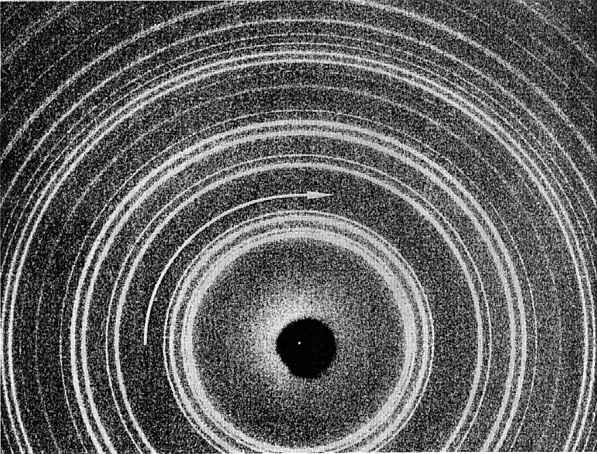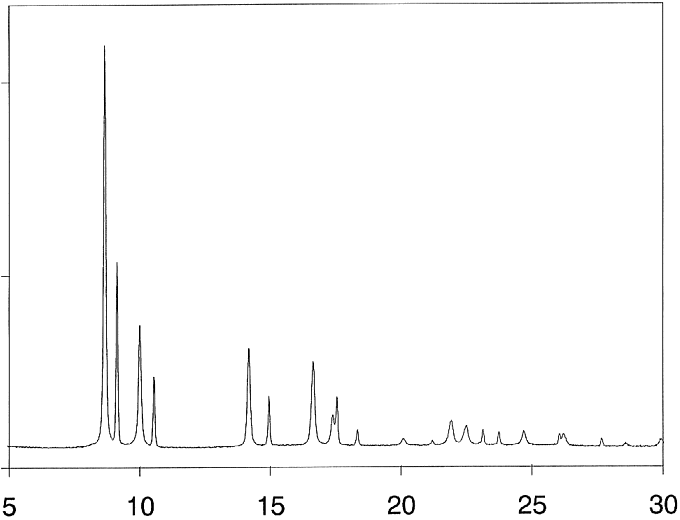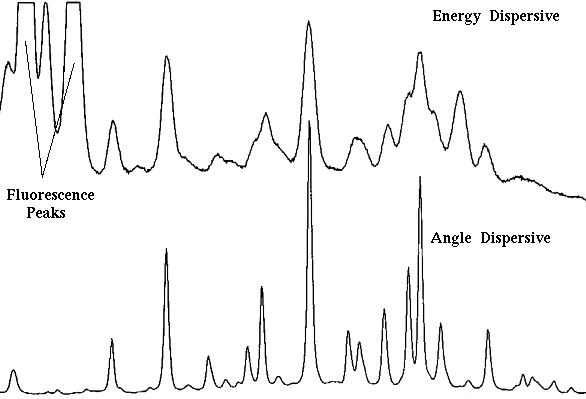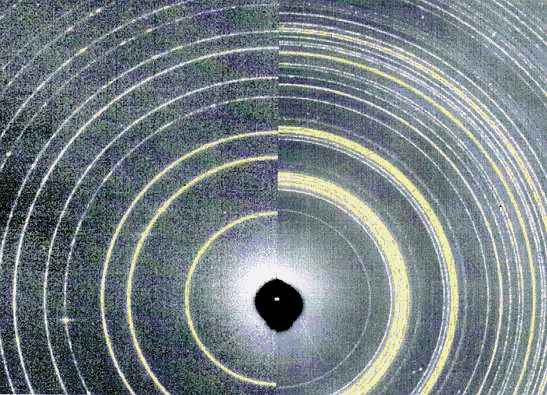 |
High Pressure
III. DAC Image Plate Combination |
 Course Material Index
Course Material Index
 Section Index
Section Index
 Previous Page
Previous Page
 Next Page
Next Page
DAC Image Plate Combination
The advantages of the DAC - image plate combination are that:
- The poor sampling statistics inherent in DACs: Because the sample volume is
so small there are relatively few crystallites present compared to normal
powder diffraction and the powder diffraction rings are therefore "spotty".
However the image plates records all or parts of these rings and by summing up
the information around the rings the spottiness can effectively be removed.
This process is referred to as "integrating around the Debye-Scherrer ring" and
the result is illustrated below:
| Image Plate Debye-Scherrer rings: |
 |
| Integrated pattern: |
 |
- The ADD mode produces much sharper diffraction peaks than the EDD mode and
this therefore yields more information and better structure refinements; the
difference is illustrated below, for an InSb sample studied by both methods:

- The use of DAC-ADD systems has been very fruitful over the last decade
permitting phase diagrams and equations of state to be measured for a wide
range of materials from semi-conductors to ices. A typical result, by
M. McMahon is shown in the following image plate illustrating the sharp
phase transition observed in InSb while increasing the pressure from ambient to
49 kbar:

 Course Material Index
Course Material Index
 Section Index
Section Index
 Previous Page
Previous Page
 Next Page
Next Page





